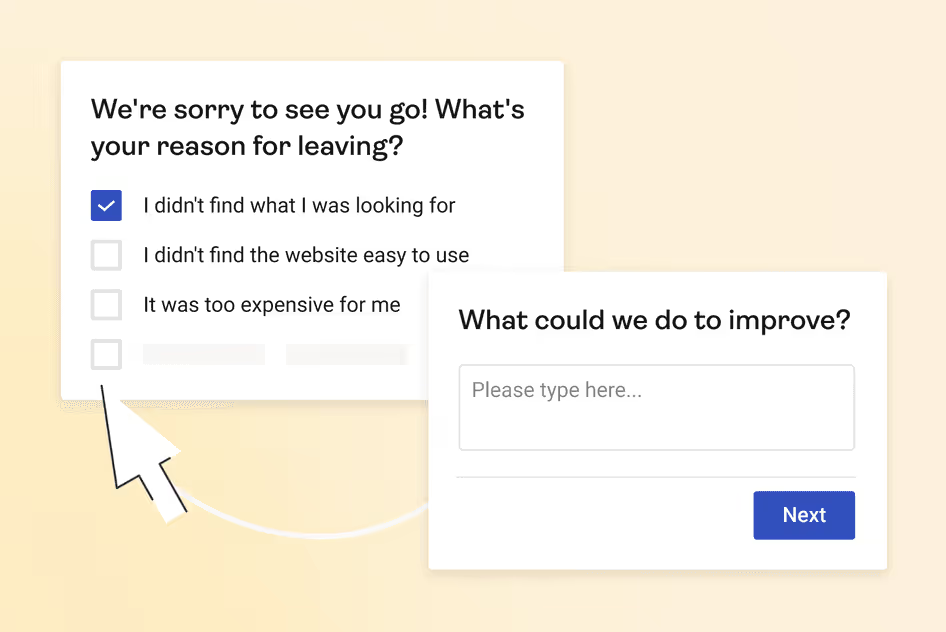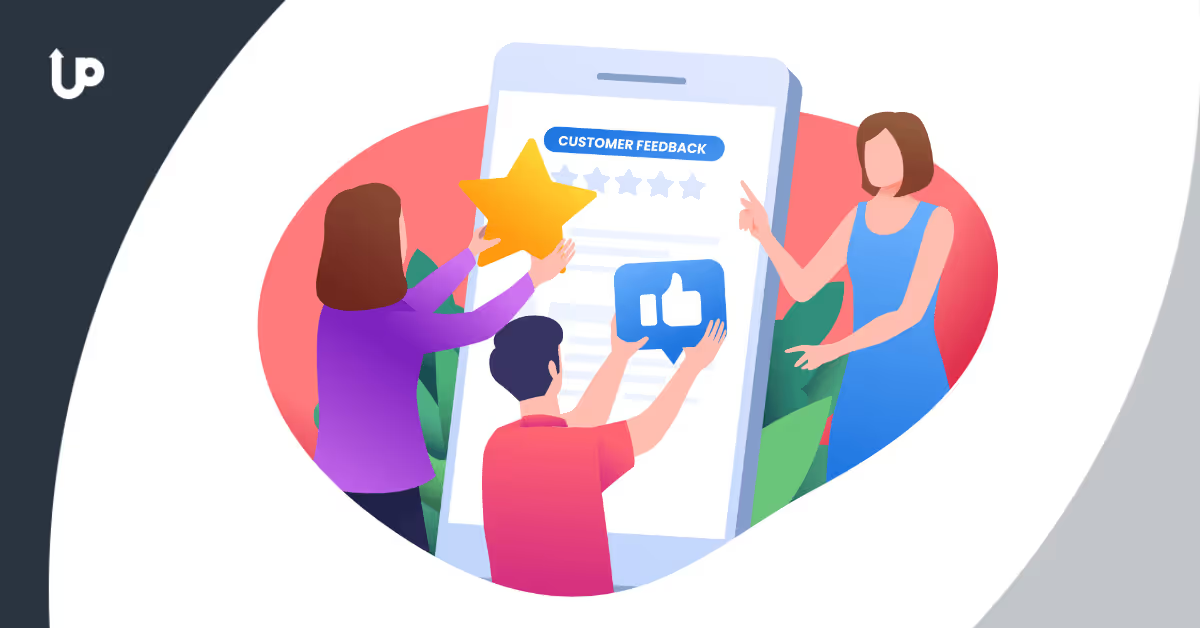Adopting a customer-centric approach should be the goal for any business. By focusing on customer needs and preferences, you can build stronger relationships and strengthen loyalty, leading to repeat business and long-term customers.
One of the key ways to achieve this is by learning how to collect customer feedback. Keep on reading as we discuss the importance of customer feedback and provide strategies on collecting it effectively!
Understanding Customer Feedback and Its Importance
Customer feedback is the information, opinions, and insights provided by customers about their experiences with your company's products, services, or overall brand.
Customer feedback examples include surveys, reviews, social media, customer service interactions, and others. They help your business understand how satisfied your customers are, identify where you can improve, and make better decisions to enhance your products, services, and overall customer experience.
Moreover, when customers see that their feedback is valued and acted upon, they are more likely to remain loyal to your brand.
Imagine a restaurant or cafe that receives customer feedback about long wait times during peak hours. By addressing this feedback—perhaps by hiring more staff or improving the efficiency of their service—the restaurant can reduce wait times, leading to happier customers who are more likely to return and recommend the place to others. This not only improves customer satisfaction but also helps the business grow!

How to Collect Customer Feedback
The next question is, how can you collect customer feedback? The good news is there are plenty of ways to know your customers’ needs and preferences:
Giveaways
A giveaway is a fun event where you can offer free products, services, or prizes to people as a way to connect with them, increase brand visibility, and spread excitement about your offerings.
Participants might simply need to take a small but meaningful action, such as liking a post, signing up for a newsletter, or completing a survey, to enter the giveaway and have a chance to win exciting prizes.
Here are creative ways to collect feedback using a giveaway:
- Survey-Based Entry: Require existing customers to complete a survey in order to join your giveaway. By tying participation in the giveaway to completing a survey, you incentivize customers to provide feedback.
- Social Media Interaction: Use social media to run a giveaway where participants must comment on a post with their feedback or suggestions. For example, you could ask them to share their thoughts on a new product feature or what they’d like to see in future products.
- Interactive Polls or Quizzes: Incorporate polls or quizzes related to your industry or products into the giveaway entry process. This can make providing feedback more engaging and fun for participants.
- Incentivized Customer Reviews: Offer extra entries or bonuses for participants who complete a detailed review or testimonial about their experience with your brand. This can provide you with qualitative feedback and testimonials for marketing purposes.
- Feature a Feedback Challenge: Create a challenge where participants submit ideas or solutions to a specific problem your business is facing. Reward the best suggestions with giveaway entries or prizes!
💎Pro Tip: UpViral is a platform that allows you to easily set up and launch giveaway campaigns. In UpViral, "custom actions" refer to specific actions or behaviors that participants can perform to earn additional entries or rewards in a giveaway or contest.
These actions can include sharing the campaign on social media, referring friends via email, visiting specific pages on your website, making purchases, and more.
You can use UpViral to set a custom action such as completing a survey for points, which can help you collect valuable feedback!
Exit-intent pop-up surveys
Exit intent pop-up surveys are a strategic way to gather feedback from website visitors who are about to leave your site. These surveys pop up on a website when it detects that a visitor is about to leave the site. They usually appear just before the visitor moves their mouse towards the browser’s close button or navigates away.

Exit-intent pop-up surveys allow you to engage with visitors who may not have interacted otherwise, capturing valuable insights that could help improve website usability or content.
When using exit-intent pop-up surveys, ask questions that are relevant to the visitor's experience on your website. Focus on areas such as navigation ease, content quality, product selection, or service satisfaction.
Personal customer interactions
Personal interactions create a sense of trust and connection between you and your customers. They allow you to gather firsthand insights into what your customers truly want, their preferences, and the problems they are facing.
Talking to your customers allows for deeper, more nuanced feedback. Customers can provide specific examples, elaborate on their experiences, and offer suggestions for improvement.
Direct communication also enables you to address customer concerns or complaints in real-time. This proactive approach can prevent negative reviews and retain customer satisfaction.
In-App Surveys
In-app surveys are feedback tools integrated directly within a mobile app or software application. These surveys appear while users are actively engaging with the app, so you can capture real-time feedback from users about their experiences, preferences, and satisfaction levels.
In-app surveys provide high response rates since users are more likely to respond to surveys presented within the app they are currently using.
When designing surveys, limit the number of questions to avoid overwhelming users. Focus on the most critical questions. Use a combination of multiple-choice, rating scales, and open-ended questions for a balanced approach.
Social listening
Social listening involves monitoring social media platforms for mentions of your brand, products, or services to understand public sentiment. This allows you to gain up-to-the-minute feedback and trends from your target audience, helping you stay responsive and relevant.
You can also understand how customers feel about your brand and products, identifying positive and negative sentiments.
Determine the keywords, hashtags, and phrases related to your brand, products, industry, and competitors that you want to monitor. This could include brand names, product names, slogans, industry terms, and common misspellings.
Track feedback across various platforms such as Facebook, Twitter, Instagram, LinkedIn, YouTube, forums, blogs, and review sites to get a comprehensive view of customer opinions.
Reviews and Ratings
Reviews and ratings are feedback mechanisms where customers evaluate a product, service, or business based on their experiences.
Reviews typically consist of written comments detailing the customer’s experience, while ratings usually involve a numerical or star-based system that quantifies satisfaction (e.g., 1 to 5 stars).
Encourage customers to leave reviews on platforms like Yelp, Google My Business, or industry-specific review sites. You can also allow them to leave reviews and ratings on your e-commerce site or product pages. Consistently monitor review platforms for recent feedback and reply promptly.
UpViral has recently been featured on Capterra’s 2023 Referral Software Shortlist with a stellar rating of 4.9/5 from over 100 reviews. This accolade reflects UpViral’s commitment to exceeding user expectations!
Community Forums
Community forums are online platforms where customers, users, or members can interact, share information, ask questions, and discuss topics related to a particular interest, product, service, or brand.
These forums can be hosted on your company’s website, social media platforms, or other third-party websites.
Forums provide a space for direct communication between customers and your business, fostering a sense of community. Regularly monitor discussions to identify common themes, suggestions, and complaints.
Use the feedback you get from forums to prioritize product or service improvements. Inform the community about changes or updates made based on their feedback to show that their input is valued.
User Testing
User testing, also known as usability testing, is a technique used to evaluate a product, service, website, or app by testing it with real users. The goal is to observe how users interact with the product, identify usability issues, and gather feedback to improve the overall user experience.
With user testing, you can identify and fix usability issues to create a more intuitive and user-friendly product. It also allows you to understand user behavior and preferences to design a product that meets their needs and expectations.
💎Pro Tip: Run a giveaway where participants need to test a feature or provide feedback as part of the entry process. This can provide you with valuable insights while engaging your audience!
Leveraging Customer Feedback

After learning how to gather effective feedback, the next step is to understand how you can use it for your business.
Here are some suggestions:
Use it to refine your products or customer service
You can use customer feedback to implement new product features or enhance existing ones based on user suggestions. Address any software bugs or technical issues reported by customers. Simplify the user interface and user experience based on usability testing results.
When it comes to customer service, provide additional training based on feedback about service quality. Improve response times if customers report long wait times. Streamline processes to resolve common issues more efficiently.
Develop customer loyalty programs
Create surveys asking customers what they value most in a loyalty program. For example,
"How often would you like to receive rewards?". Different customer segments (e.g., frequent buyers, occasional shoppers, high spenders) might have different preferences. Segment feedback accordingly.
Based on feedback, decide on the types of rewards (e.g., discounts, exclusive products, points system, early access to sales). Use feedback to personalize rewards and offers. For example, if customers express interest in specific product categories, tailor rewards to those interests.
Highlight quotes from satisfied customers in your promotional materials
Using customer quotes effectively in your promotional materials can significantly enhance your marketing efforts by providing credible, relatable endorsements from real users.
Choose quotes that reflect genuine experiences and emotions. Ensure the quotes are relatable to your target audience. Include the customer’s name, photo, and any relevant details like their job title or location (with their permission). Adding context makes the testimonials more credible and relatable.
You can use customer quotes in the following places:
- Website homepage
- Product pages
- Email newsletters
- Social media posts
- Brochures or flyers
- Print or digital ads
Final Thoughts
Collecting feedback from customers doesn’t have to be labor-intensive or time-consuming. With the right tools and processes, feedback can be efficiently collected and analyzed. The insights gained can lead to significant improvements and are worth the investment.
If you’re interested in collecting feedback through giveaways, try UpViral! Many businesses have succeeded in using the platform to reach their goals, such as getting new leads, improving brand awareness, and getting insights into customer needs and preferences.





.png)